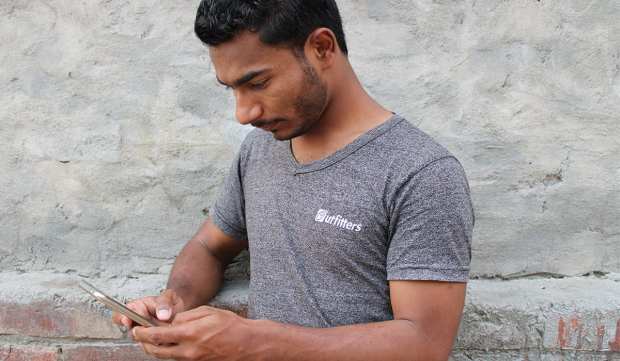Super Apps Rising: Mobile Drives Digital Payments Uptick In Pakistan

In Pakistan, and elsewhere, the stars are aligning for greater use of digital banking and payments to improve financial inclusion. To that end, Amir Wain, CEO of i2c Inc., told PYMNTS CEO Karen Webster in an interview that the pandemic and the rise of mobile infrastructure have set the stage to bring people living in developing and emerging economies into the digital realm.
The conversation came against the backdrop where i2c announced a partnership with TAG, to launch a super app that provides instant payments capability to Pakistan’s unbanked adult population, which at present numbers about 100 million individuals. Wain noted that, in general, “some sort of a major event takes place, that triggers a new norm.”
And even before the coronavirus sent us all indoors and online, the advent of mobile handsets — ever cheaper and more affordable for large swaths of the population — and mobile networks becoming widely available in emerging markets represented such an event. A widespread embrace of mobile devices, said Wain, “made it possible for new players in that ecosystem to build and deliver services on top of the mobile telecom infrastructure. It’s been good for the telecom providers, too, because the infrastructure gets used for a variety of new purposes.”
In commerce and in the great pivot away from cash, challenges remain — tied to acceptance. As eCommerce has become more firmly entrenched in countries such as Pakistan, buying and selling goods by digital means (moving away from the cash-on-delivery model) has generated at least a “reasonable acceptance level,” according to Wain, that gets some critical mass through a few large anchor eCommerce merchants in each market.
“You have these ‘local Amazons’ that are cropping up,” he told Webster, “and if you integrate with them, then you have merchants in meaningful numbers driving digital currency activity. Once you have some activity going, you have to think about, how to continue to expand the acceptance network.’ ”
Mobile plays a big part in increasing acceptance, said Wain, as it provides an alternative to point of sale (POS) terminals, land lines that’s easy to deploy and maintain.
QR codes and even peer-to-peer (P2P) options are gaining favor, especially for smaller retailers.
Regulators are also getting on board with letting non-bank financial institutions (NBFIs) offer financial products in emerging economies, broadening the financial services ecosystem, said Wain. The greenfield opportunities are also attracting significant numbers of entrepreneurs and capital to countries like Pakistan.
All of these factors create a “perfect combination for digital payments to take off in these markets,” he said.
Issuance Matters, Too
Issuing plays a critical role too — as Webster stated, users need secure credentials in place to transact.
“This is where you will find weaknesses and hence will see a lot of improvement over the next few years,” predicted Wain, “People who do not have experience with the issuing business underestimate its complexities. To them, transferring $10 from one account to another appears fairly simple. But there is a lot more to having a secure and stable issuer processing system. System integrity, handling of leading-edge cases and compliance are some of the areas often overlooked. And let’s not forget there are plenty of fraudsters who are looking for system weaknesses that they can exploit.”
Bad actors may be lured by the relatively immature infrastructure. In other cases, apps are too slow, or user interfaces are clunky. In the end, though, evolution is inexorable — and we are evolving toward super apps. With a nod toward Pakistan as a specific market, Wain noted that there is no dominant super app yet — but the conditions now exist for such an offering to take root.
In terms of numbers, he said, the population of 220 million represents a significant market and there are 100 million mobile users (with approximately 70 million smartphones in the market), and counting.
Among the many features tied to the super app, due to launch in the first quarter, P2P proves to be especially useful for people sending money to rural areas — and which will help bring them toward using more services as time goes on. That functionality helps fill a vacuum left by larger, traditional financial institutions (FIs), said Wain, which tend to be slow in responding to consumers’ needs, and where it’s proven difficult to serve individuals’ “small ticket needs” through expensive branches.
The traditional bank model is appealing to the higher economic strata. But younger, digitally-savvy consumers in Pakistan, said Wain, place more value on the user experience and the convenience of banking on their devices.
Looking ahead, as apps evolve, credit will have to be part of consumer-facing offerings and experiences, predicted Wain. But initially, the credit extended will have to be “small-ticket credit,” as in Pakistan, there is not an underlying credit bureau. While some regulations were introduced some time ago, they will have to be enhanced with clearer paths to collection and recovery in order for FIs and other providers to feel more comfortable with extending larger loans. Microlending, with the aid of artificial intelligence (AI) for risk scoring and other advanced technologies, can help cement that comfort level, he said.
For now, he said, firms like TAG, powered by i2c and other providers are “in a race for customer acquisition and making sure that all the other pieces are working before adding those hooks. It will happen.”
